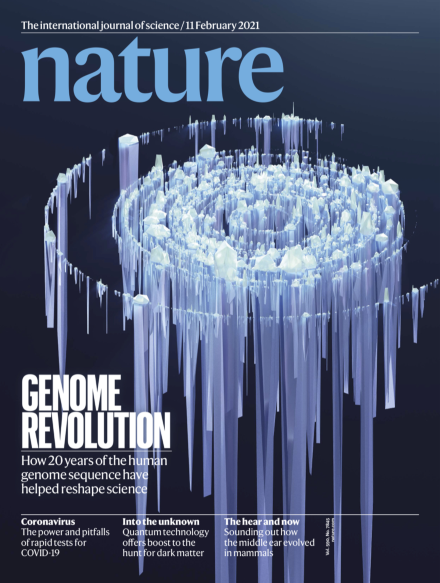Volume 590 Issue 7845, 11 February 2021
This Week
-
Editorial
-
News in Focus
-
Features
Opinion
-
Comment
Research
-
News & Views
This Week
-
Editorial
-
World View
-
Research Highlights
News in Focus
-
News Round-Up
-
News
-
Features
Books & Arts
-
Book Review
Work
-
Feature
-
Where I Work
Research
-
News & Views
-
Reviews
-
Articles

